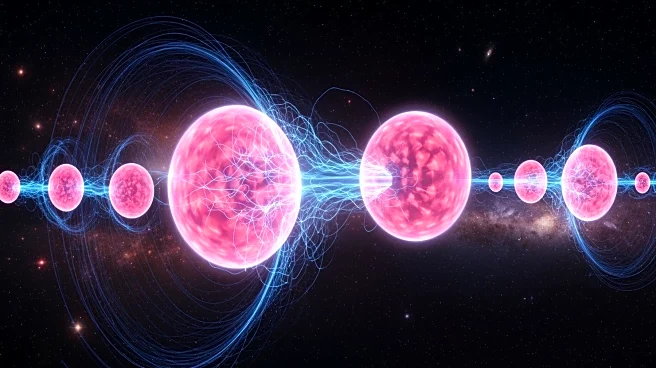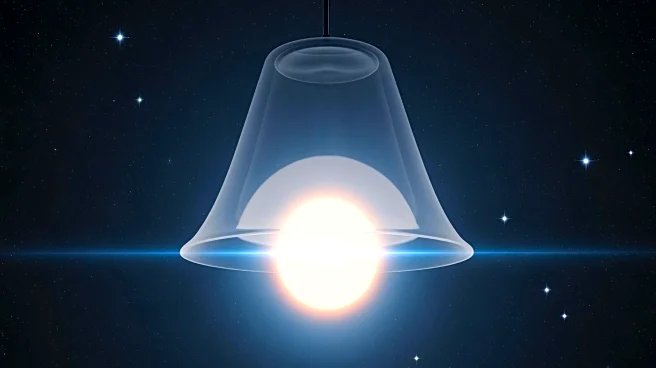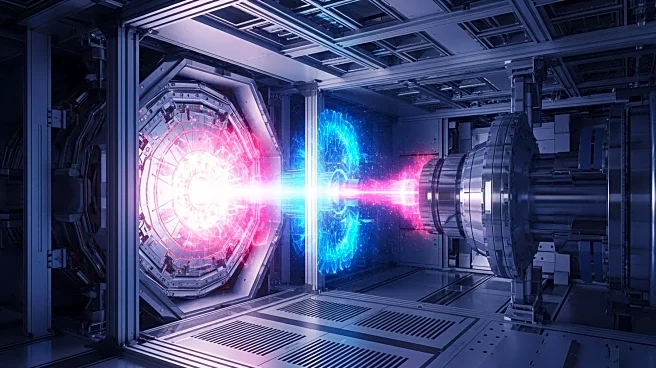What's Happening?
CERN scientists have recreated plasma jets similar to those found in blazars, providing insights into cosmic magnetic fields and gamma ray behavior. Using the Super Proton Synchrotron, the team generated
high-density plasma fireballs that mimic conditions around supermassive black holes. The experiment challenges assumptions about plasma behavior and suggests faint magnetic fields may deflect gamma rays. The study, published in the Proceedings of the National Academy of Sciences, indicates that primordial magnetic fields could be responsible for the observed gamma ray deficit.
Why It's Important?
This experiment offers a new understanding of cosmic magnetic fields, which play a crucial role in astrophysics. By simulating blazar jets, scientists can better understand the universe's magnetic landscape and its impact on gamma ray propagation. The findings could influence theories on cosmic ray behavior and galaxy formation, as magnetic fields affect star formation and galactic dynamics. This research bridges laboratory plasma physics with high-energy astrophysics, providing a new perspective on unresolved cosmic questions.
What's Next?
Future experiments may focus on directly measuring magnetic field effects in lab plasmas, potentially integrating with upcoming facilities like FAIR in Germany. As astrophysics intersects with particle physics, these studies could illuminate hidden magnetism and the universe's fabric. The team plans to explore further simulations to map the universe's magnetic landscape, potentially revealing secrets from the early universe.
Beyond the Headlines
The implications of this research extend to understanding dark matter and cosmic structure. If intergalactic magnetic fields are primordial, they could influence cosmic voids and filaments, offering probes of physics beyond the Standard Model. This experiment challenges traditional blazar models, suggesting external magnetic influences play a larger role in cosmic ray deflection.











